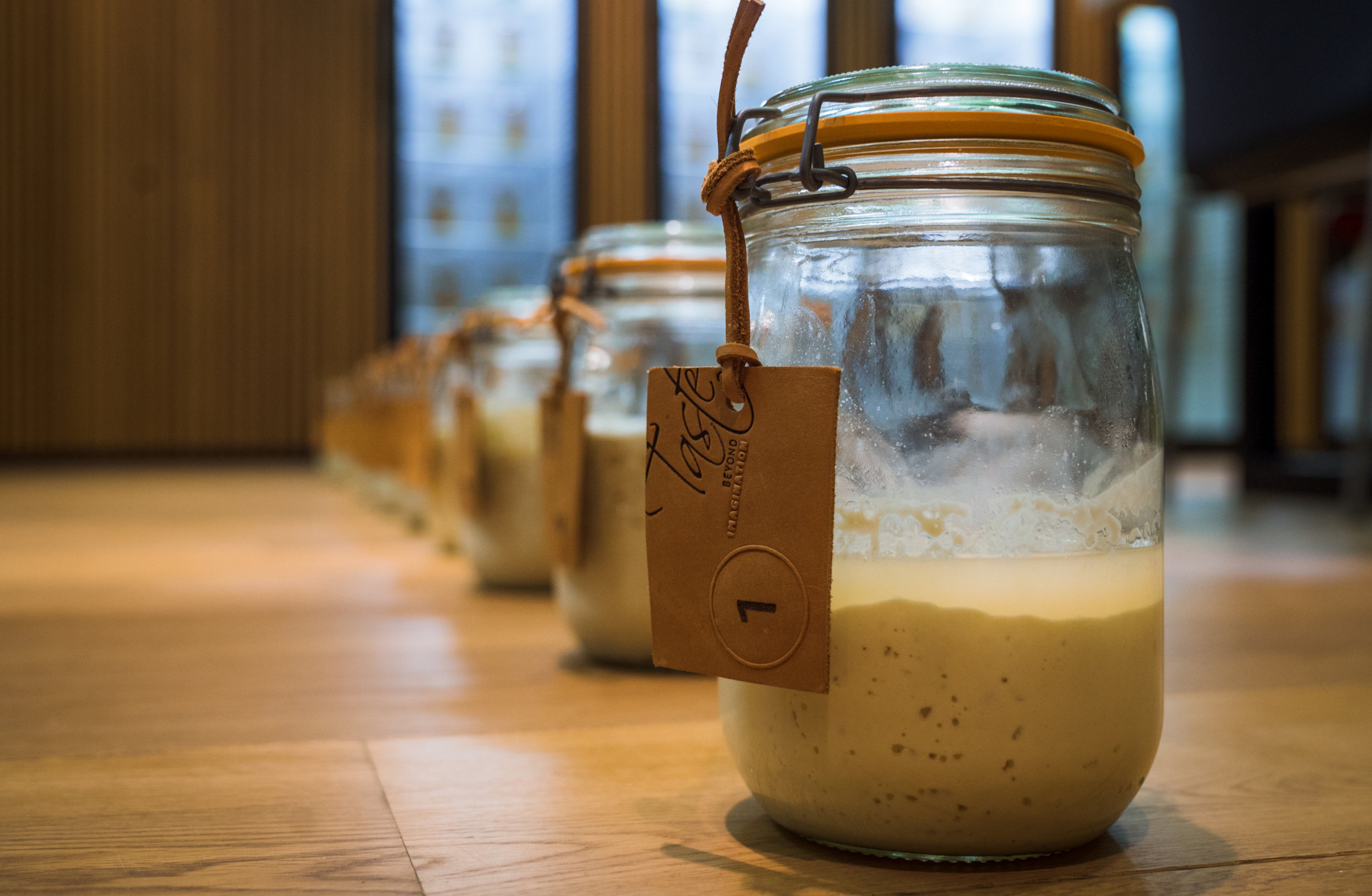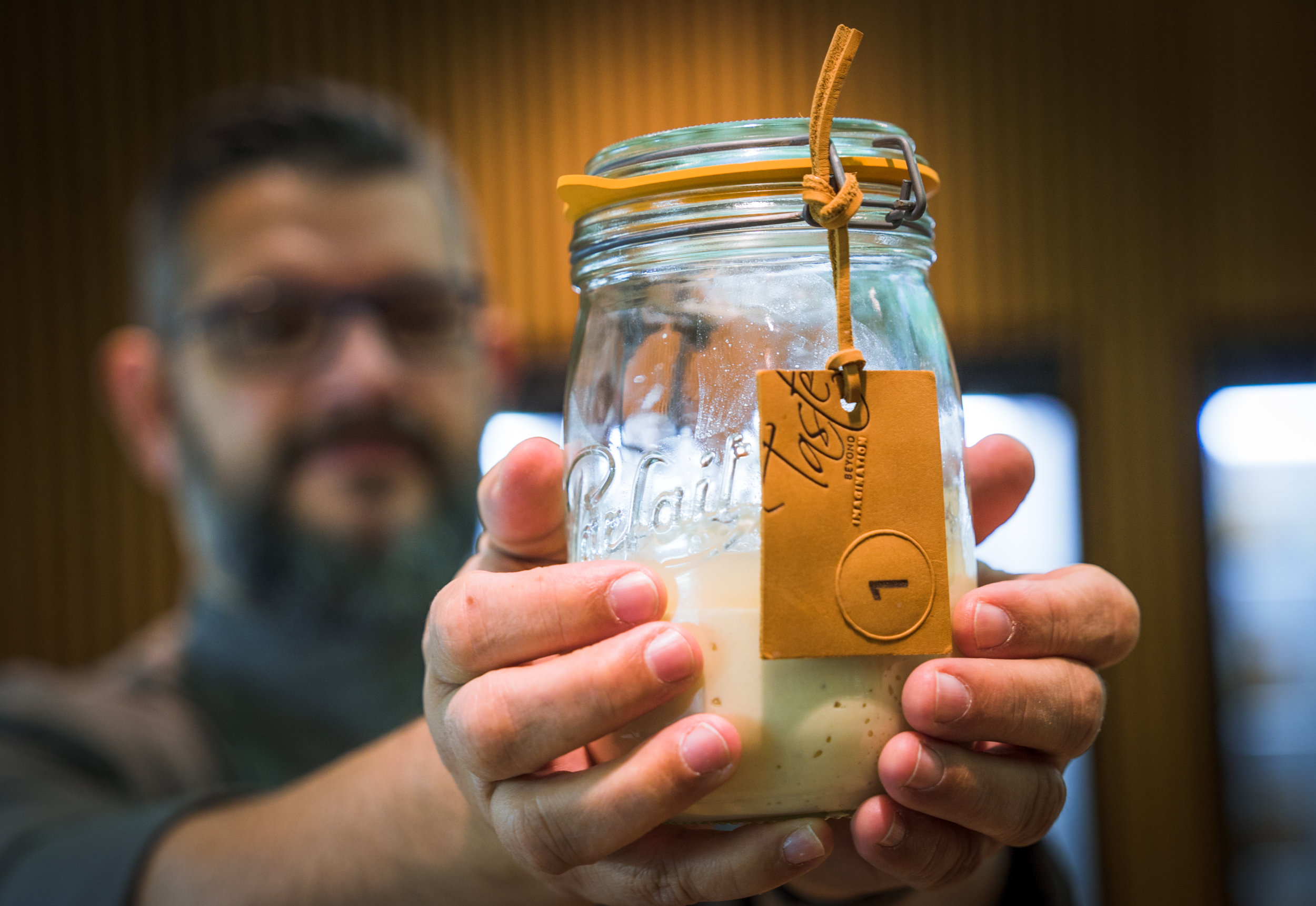Karl De Smedt has travelled to 50 countries on a quest for sourdough starters, to compile and study them at the Puratos Centre for Bread Flavour in Belgium. He invites us into his curious archive…
First thing’s first, Karl. Why?
One hundred and fifty years ago, bakers yeast was starting to be produced commercially. Comparatively, the sourdough process was very time-consuming, so most bakers abandoned it and the knowledge was lost. I feel that having a library where sourdough can be studied is an important contribution to the world of baking and fermentation.
Tell us bit more about yourself and your background.
I graduated from bakery and patisserie school in 1988. I worked for six years in a confectionary in Brussels before joining Puratos in 1994 as a test baker. That’s where I worked with sourdough for the first time. The sourdough dated to 1989, brought over by a colleague from San Francisco, as part of research to produce sourdough solutions for the company’s customers. You could say this sample was the very first sourdough in our collection.
Since 2008, I’ve been responsible for the Centre for Bread Flavour, a specialist branch at the forefront of the company’s sourdough production efforts, which handles clients from all over the world. It’s here we opened the sourdough library in 2013.
How unique can a final sourdough product be?
Very. We like to compare sourdough to cheese, where the main ingredient is milk, but there are so many different types of cheese, due to the origin of the milk, fermentation temperatures, the ageing, the producer etc.With sourdough, there’s just as much variety – in our library we’ve identified over 900 microorganisms from 108 starters.
I understand that the original creator of each starter also needs to donate yearly supplies of flour to the library for maintenance. So, will this change the outcome of the mix later on?
Indeed, we do ask for a supply of flour from the owners for their sourdough contributions. However, we do that to minimise the impact of change, a protocol recommended to us by Professor Marco Gobbetti from the University of Bolzano and Bari in Italy. We are well aware that the starters might be subject to change. But with Gobbetti’s protocol, the sourdough cultures are kept in optimum conditions to preserve them for longer; we have the micro-organisms stored in a freezer at -80°C and the sourdoughs themselves are stored at 4°C.
When a sourdough enters our library, it’s like taking a picture. We capture that moment – we have the composition of the sourdough at that point in time. That allows us to go back to the bakery after 5, 10 or 20 years to compare the two starters with each other and the original sample. There is no other place in the world that is doing this for sourdough. That’s why this library is so important to us.
Does the library undertake research into the microbes in the starters?
Yes, of course. Through DNA sequencing, we can define each and every microbe that we find in a starter. So far, we have identified more than 900 different ones. We do this in close collaboration with the universities we work with; Professor Gobbetti and his team have already been able to produce a couple of scientific publications as a result of our work together.
Any surprising finds on your quest?
In a starter from Switzerland, made from rye flour, and one from Guadalajara in Mexico, we found the same strain of yeast: Torulaspora delbreucki. It’s a strain often found in premium wines. The only relation we could see between the two is that the bakeries were located at about 1,500 metres altitude. Also, In Canada I met a lady who had a sourdough that dated back to 1896 – her great-grandfather carried it to Dawson City during the Klondike Gold Rush. I shared her recipe online so our followers could make her waffles.




